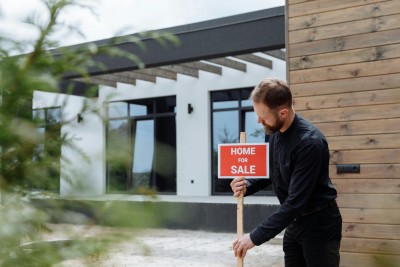We're living in a visual revolution, and 3D virtual tour services are changing how people explore spaces. A well-executed 3D virtual tour service does more than showrooms—it creates emotional connections. Imagine a family in Tokyo walking through their dream home in Paris or an art student in Brazil studying brushstrokes in the Louvre. This technology removes physical barriers in remarkable ways.
What separates excellent tours from mediocre ones? Three key elements (this is our only list in the entire article):
- Thoughtful planning of sightlines and flow
- Meticulous attention to lighting consistency
- Strategic use of interactive elements
These fundamentals apply whether you're showcasing a $10 million estate or a cozy bed-and-breakfast. The principles remain the same, even as the scale changes.
Pre-Production Essentials
Before touching your camera, invest time in understanding your space. Walk through at different times of day to observe lighting changes. Notice how sunlight moves across rooms and where shadows form. Professional 360 virtual tour company operators often create light maps to plan shoots.
Identify the story you want to tell. Are you highlighting architectural details or creating a welcoming atmosphere? Your photographic approach should support this narrative. Remove any clutter that doesn't serve your story—excess furniture, personal items, or temporary decorations.
Camera Techniques That Work
The technical side of 360° photography has its nuances. Position your camera consistently - approximately 5 feet works for most spaces as it mimics human eye level. Use a tripod with a built-in level to ensure straight horizons in every shot.
Move methodically through the space, capturing each position with about 30% overlap with the previous shot. This overlap is crucial for smooth stitching later. Pay special attention to transitions between areas - doorway shots that show connections between spaces help maintain the tour's flow.
Lighting can make or break your results. For interiors, turn on all permanent lights and consider adding supplemental lighting to dark corners. Avoid mixing color temperatures—having some lights at 3000K and others at 5000K creates an unnatural look. Many professional 360-degree virtual tour service providers carry portable LED panels to balance lighting.
Post-Production Magic
After capturing your images, the genuine craftsmanship begins. Start by importing all photos to your chosen stitching software. PTGui offers robust manual controls, while more automated options like Kuula's built-in tools work well for beginners.
Examine each stitched panorama for errors. Look for "ghosting," where moving objects create duplicates and misaligned seams where walls or floors don't match perfectly. The clone stamp tool becomes your best friend for cleaning up these imperfections.
Color correction ensures visual consistency throughout the tour. Our eyes naturally adjust to lighting changes as we move through spaces, but cameras don't. You must manually match color temperatures and exposures between shots for a seamless experience.
Choosing Your Platform Wisely
The hosting platform you select should match your needs and budget. Matterport dominates the real estate sector with its measurement tools and dollhouse views, while Kuula offers simpler, more affordable options for small businesses.
Consider your audience's technical comfort level. Some platforms offer virtual reality compatibility, which impresses tech-savvy users but may frustrate others. The best virtual tour agency solutions balance impressive features with intuitive navigation.
Enhancing Without Overwhelming
Interactive elements should enhance rather than distract. Thoughtfully placed hotspots can provide valuable information - imagine clicking on a painting in a museum tour to learn about the artist. However, overcrowding your tour with too many buttons and pop-ups creates confusion.
Floor plans help with orientation, especially in larger spaces. When used sparingly, audio narration adds personality. The key is focusing on the space rather than the bells and whistles.
Launching With Impact
Your published tour deserves an audience. Embed it prominently on your website - not buried in a gallery page. Share direct links in email campaigns with compelling preview images. Create QR codes that visitors can scan at physical locations to access the virtual experience.
Track engagement metrics to understand what works. Notice where viewers spend the most time, which hotspots they interact with, and where they drop off. This data is invaluable for improving future tours.
Avoiding Common Pitfalls
Even experienced creators make mistakes. Rushing the shooting process leads to gaps in coverage. Neglecting lighting creates uneven results. Overloading tours with interactive elements overwhelm viewers. Remember that in virtual tours, simplicity and quality always trump quantity.
Mobile optimization is crucial - over 60% of tours are viewed on phones. Test your tour on multiple devices before publishing. Ensure buttons are large enough to tap easily and that loading times remain reasonable.
The Road Ahead
Virtual tour technology continues evolving rapidly. New developments in LiDAR scanning, augmented reality integration, and AI-assisted editing make professional-quality results more accessible. Staying current with these trends will keep your skills relevant.
Final Thoughts
Creating compelling 3D virtual tours is an art form that combines technical skill with creative vision. Your first attempt won't be perfect, and that's okay. Each tour you create will build your expertise and intuition.
The digital world hungers for immersive experiences. With these guidelines, you're equipped to meet that demand. Remember that great tours don't just show spaces—they tell stories and create connections. Now, grab your camera and start creating. Your virtual journey begins today.
